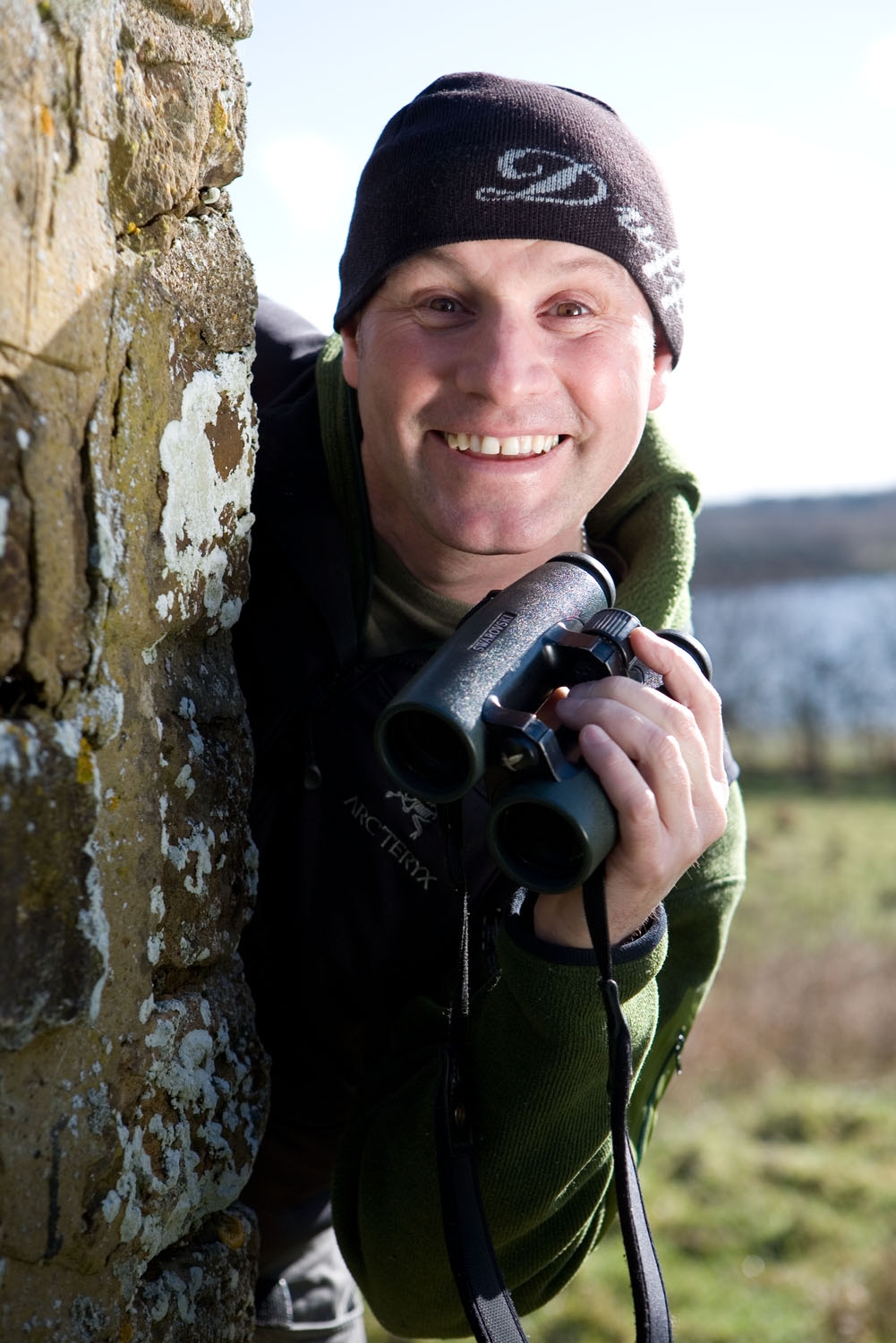While the whiskery face of a grey seal popping out of our coastal waters will always remain a delight to spot, in no way could this fleeting view be labelled a ‘spectacle’. For the real seal deal you should instead head to a select number of beaches around our coastline, which at this time of year play host to an astonishing annual fiesta of synchronised pupping, before the boorish bulls then gate-crash the party with just one thing on their minds: mating again.
If you do go seal watching, it's vitally important not to disturb them. Follow the guidelines listed below to ensure that both adults and pups remain undisturbed and able to continue with their normal behaviours.
One of just two pinnipeds breeding along our coastline, the other being the common or harbour seal (below), it is ironically the grey seal that is more abundant.
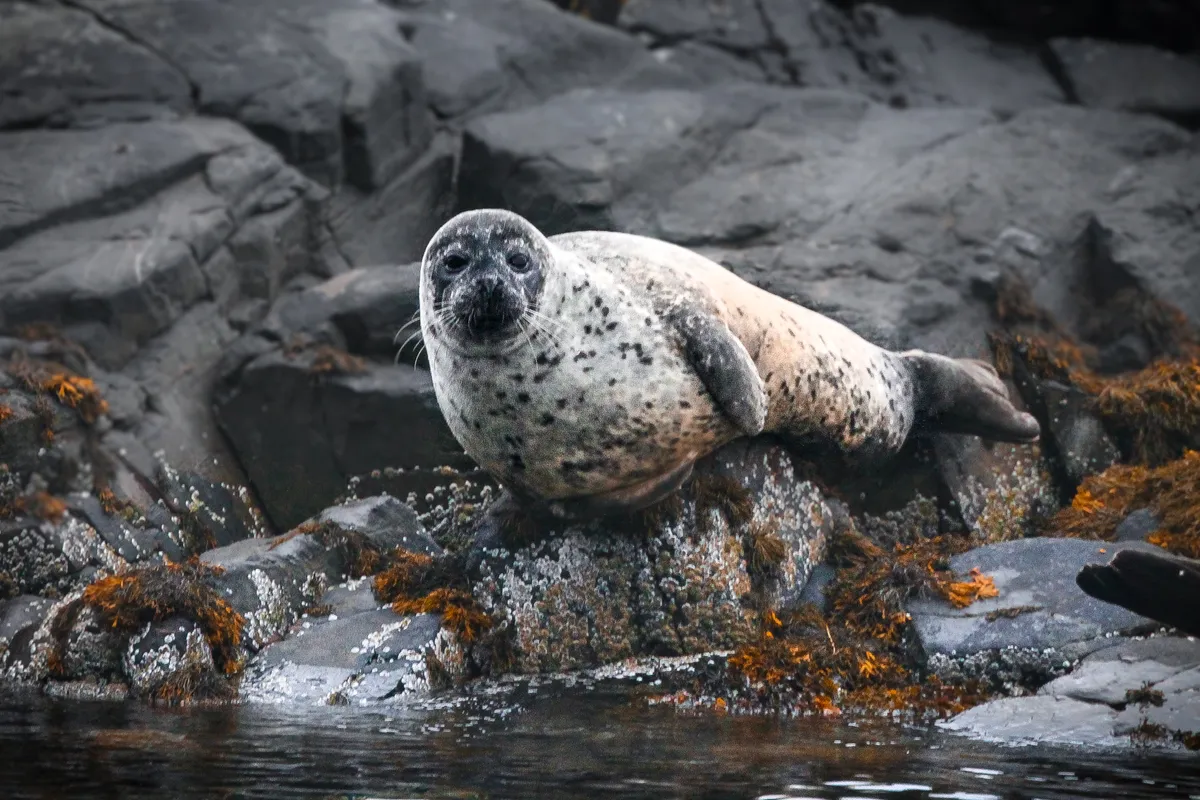
Greys were originally thought to have bred across the entire northern Atlantic until the end of the last Ice Age, when the population was effectively split between the east and west sides of the ‘pond’. And with Britain holding the majority of the eastern stock of seals, our convoluted coasts host about 45% of the entire world population during the breeding season.
Discounting whales, the grey seal is our largest British mammal. It's thought that the heaviest males could weigh close to 300kg, or nearly twice that of the more slimline females.
When are grey seal pups born?
The mass production of grey seal pups is very much an autumnal phenomenon. Having spent the previous nine months fattening up out at sea, the pupping season kicks off when the first pregnant females begin hauling themselves up the beach. They return to the beach where they were born to give birth.
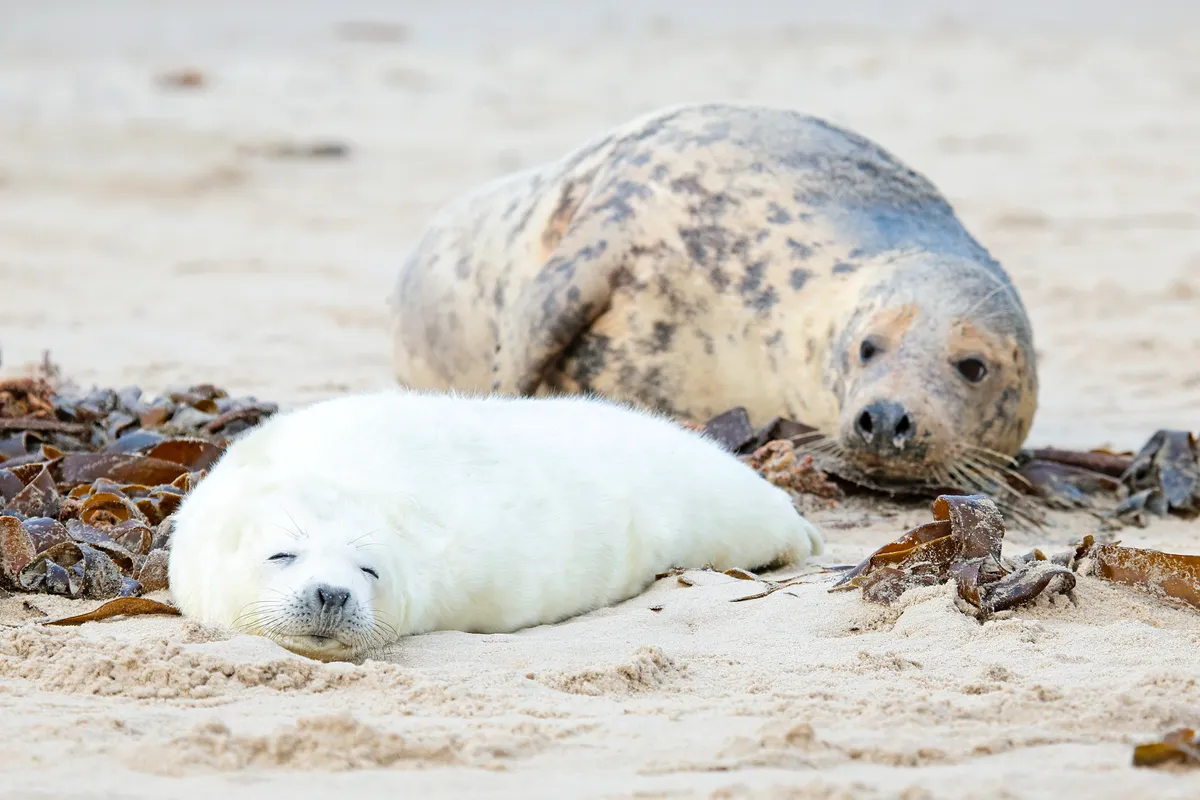
Favoured birthing spots tend to be both smooth and sandy, and anywhere from above the high-tide line to in amongst sand dunes several hundred metres from the water’s edge.
Although twins were recently confirmed on the Farne Islands in 2016, a single pup is very much the norm, with the birth of the 15kg pup often occurring rapidly and with little indication of any discomfort during labour. The majority of births also occur within a short window, as the species adopts a safety-in-numbers strategy originally designed to swamp predators.
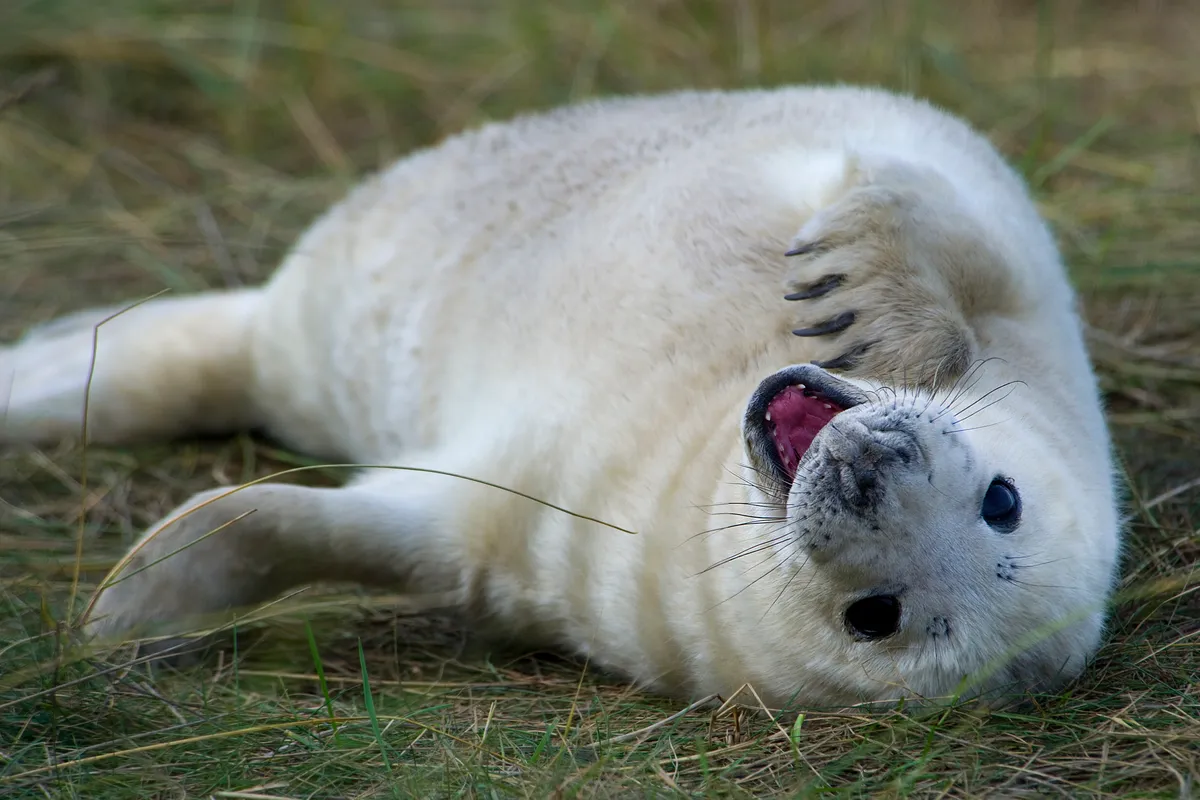
Once born, the mother will then constantly sniff and touch the pup to quickly learn its smell and help avoid becoming separated from it.
With the beach births fo rapid and discreet, often the first sign that a pup has arrived is when an unseemly squabble of gulls breaks out on the beach. These supreme scavengers will quickly descend to fight for the membrane that enclosed the pup, and then again for the placenta when it is expelled shortly after.
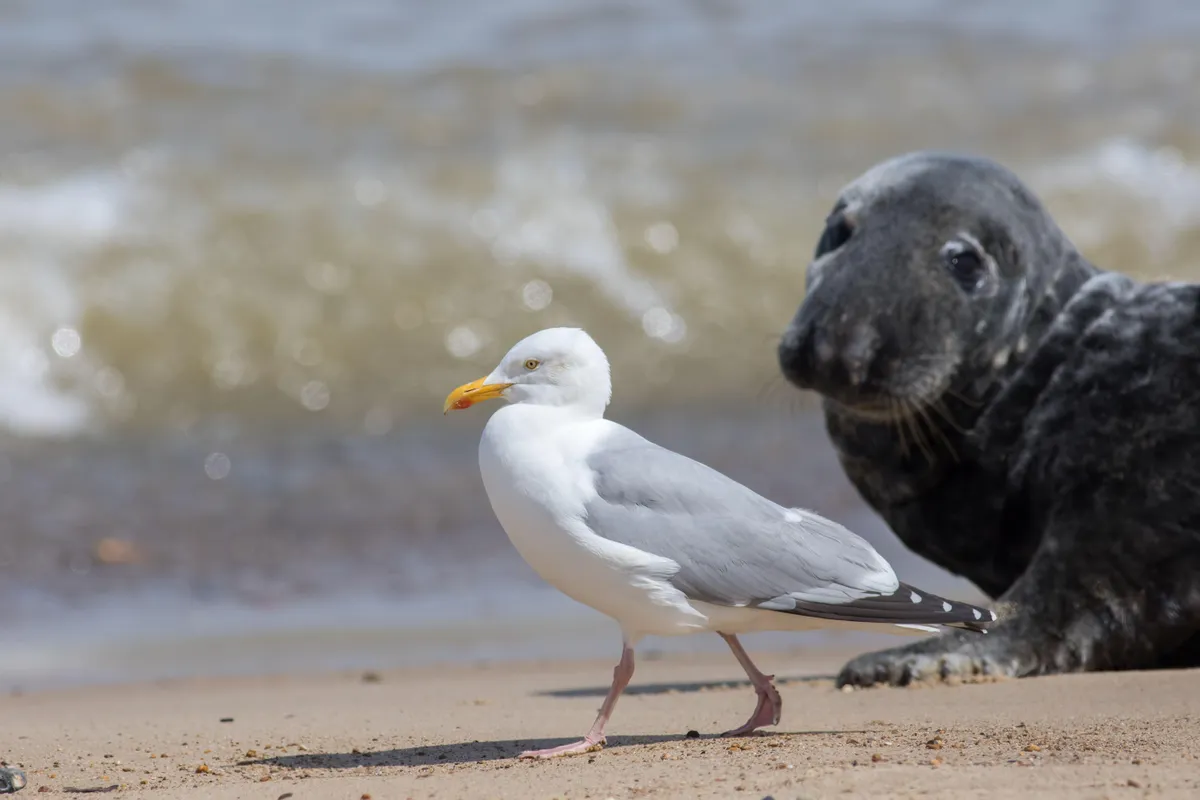
The pup’s distinctive creamy white fur coat is thought to originate from when the species bred in icy landscapes. But certainly since the last Ice Age, a lack of natural predators in modern Britain has reduced the evolutionary necessity to remain camouflaged. The white fur is shed when a pup is between two and three weeks old.
Sometimes melanistic grey seal pups can be born (below), where they have a black fur coat instead of white, at a frequency of roughly one in every 400 pups.
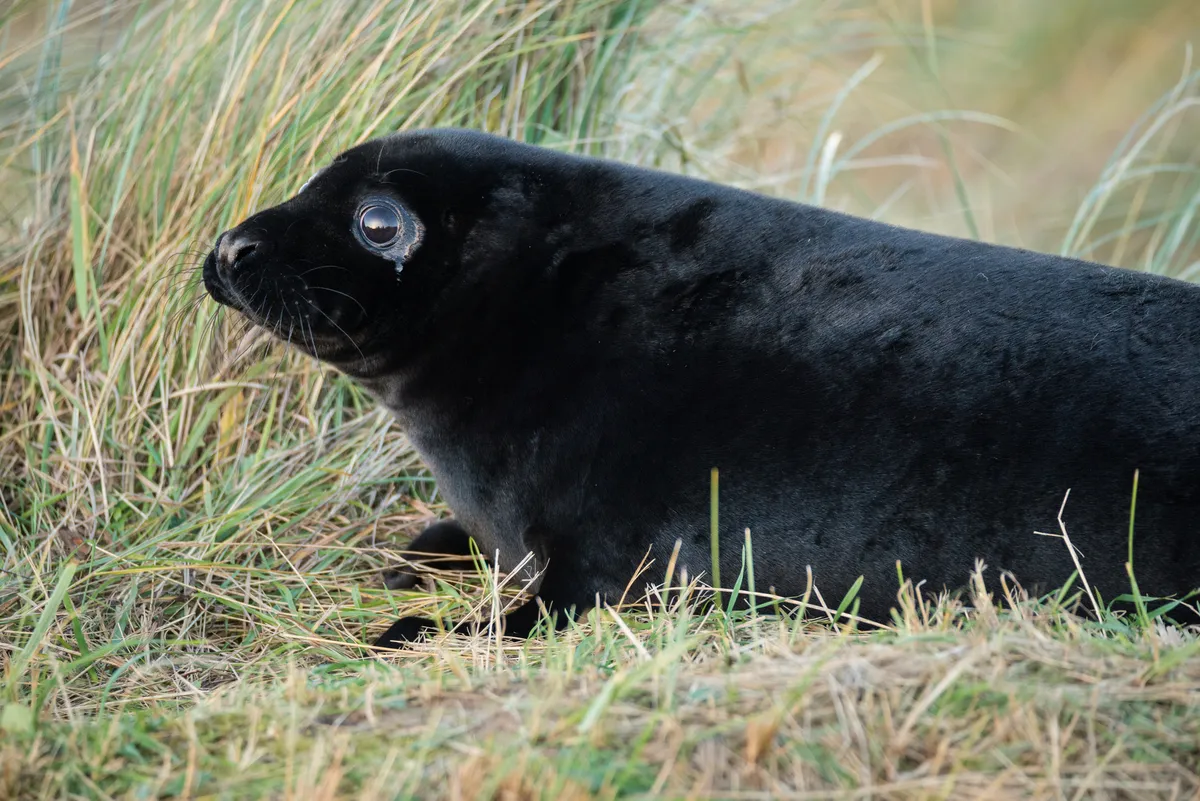
Do grey seal pups drink milk?
Almost immediately after birth, the pups must latch on to their mother’s nipple as ‘operation weight gain’ commences. Resembling mayonnaise, the milk consists of 60% fat, so the pups can easily double their weight in the first week.
Pups will suckle their mother five to six times a day for three weeks, gaining about 2kg of weight every day. However, the lactation period lasts no more than three weeks and it’s crucial the youngsters quadruple their birth weight before the milk bar runs dry.
Once weaned, the pups are abandoned, and with high mortalities occurring both on the beach and during their first few months at sea, sadly only about two-thirds will survive to reach their first birthday.
However, once this difficult first year is negotiated, their prospects become brighter, and hopefully they’ll participate in the mating game three or four autumns further down the line.
When do grey seals mate?
Male grey seals are usually darker in colour than the females, and are often scarred as a result of battles. The males will usually begin competing with each other for access to the females when the first pups are born. Size matters, as the biggest bulls or ‘beachmasters’ fight for exclusive access to between two and ten females.
Their large energy stores mean they can go for a long time without eating and stay ashore for longer, increasing potential mating opportunities.
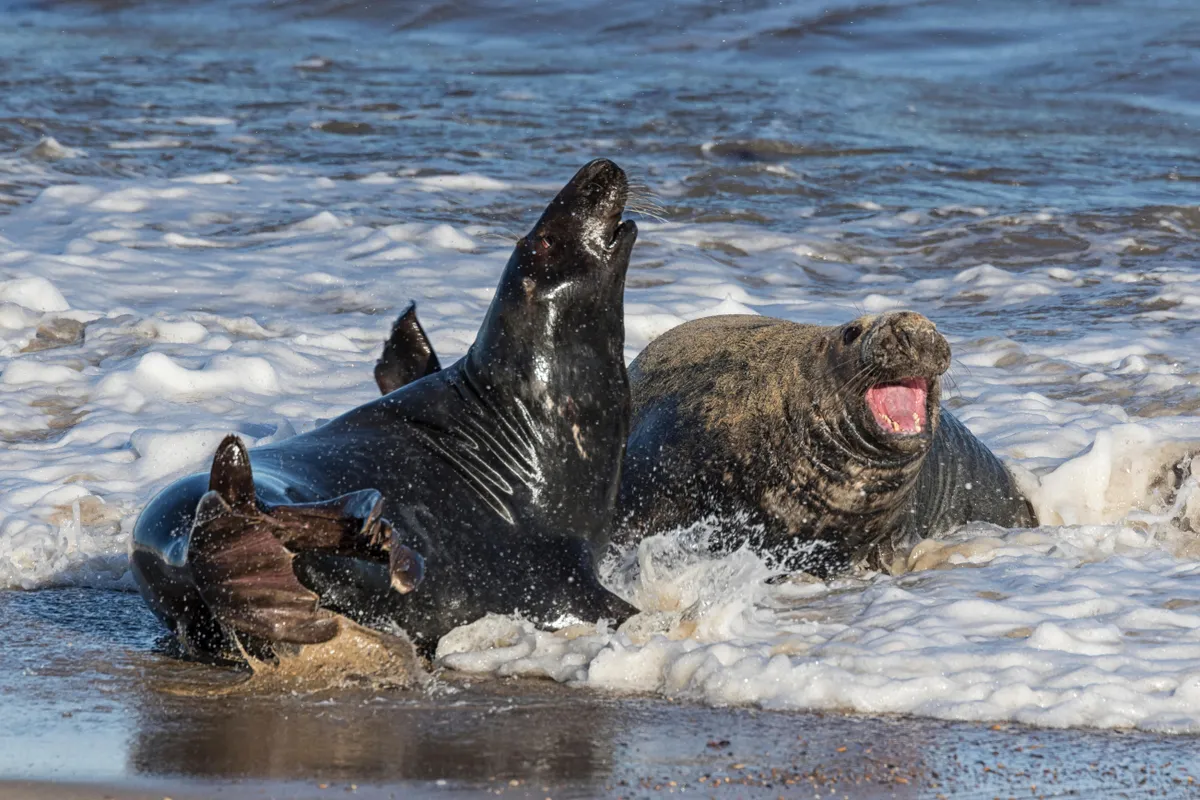
Relations between adjacent and dominant males are mostly amicable, but when a large, harem-less interloper attempts a takeover, the ensuing battle can be spectacular, with savage bites. And with the females rapidly coming in to oestrous (or heat) by the end of the lactation period, it really is a case of ‘to the victor, the spoils’.
Best places to see grey seal pups in the UK
When going to view seals, it is very important not to disturb them – particularly when there are pups. Some key rules to follow:
- Don't get closer to a seal than 20m
- Never get between a seal and her pup, or between a seal and the sea
- Noise should be kept to a minimum
- Dogs need to be kept on short leads and under control
Disturbance to animals including seals, cetaceans and seabirds causes a change in animal behaviour, raising stress levels, and triggering the flight, fight or freeze response, and can mean that eggs or young animals are abandoned, animals are separated from the group, previous energy is waster, and injury or death can occur.
A report from Cornwall Wildlife Trust found that the number of reported disturbance events nearly tripled between 2014 and 2020, with coastal users and walkers causing the highest number of seal disturbances, followed by tripper boats and paddle sports.
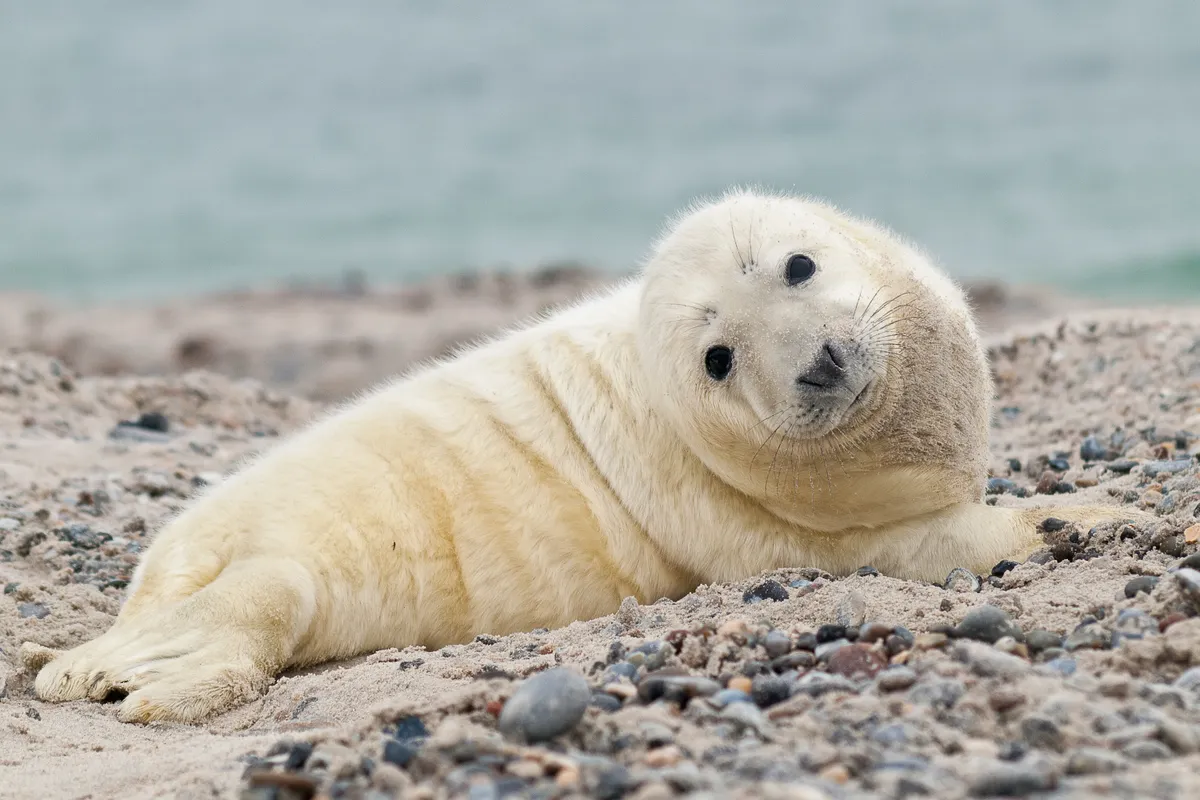
Monach Islands, Outer Hebrides, Scotland
Situated off the west coast of North Uist in the Outer Hebrides, these uninhabited islands must be accessed by boat, but 10,000 grey seals come ashore here in autumn.
Orkney Islands, Scotland
The islands host many grey seal colonies around the dramatic coastline. One of the best viewing spots for ‘selkies’, as the locals call them, is from the cliff top at Burwick on South Ronaldsay.
Farne Islands, Northumberland, England
This area off the Northumberland coast is famous for its summer seabird colonies, but is also home to thousands of grey seals each autumn. Seal counts are undertaken every year.
Horsey and Winterton, Norfolk, England
Head to these sites along the Norfolk coast to spot a relatively accessible seal colony. Volunteer wardens will help you see the seals from the sand dunes.
Donna Nook National Nature Reserve, Lincolnshire, England
This Lincolnshire spot has a large grey seal colony that produces about 1,500 pups a year. The Ministry of Defence uses the area just offshore as a bombing target range.
Main image: A female grey seal face to face with her pup in the sand dunes in Lincolnshire, England, UK. © Jacky Parker Photography/Getty
